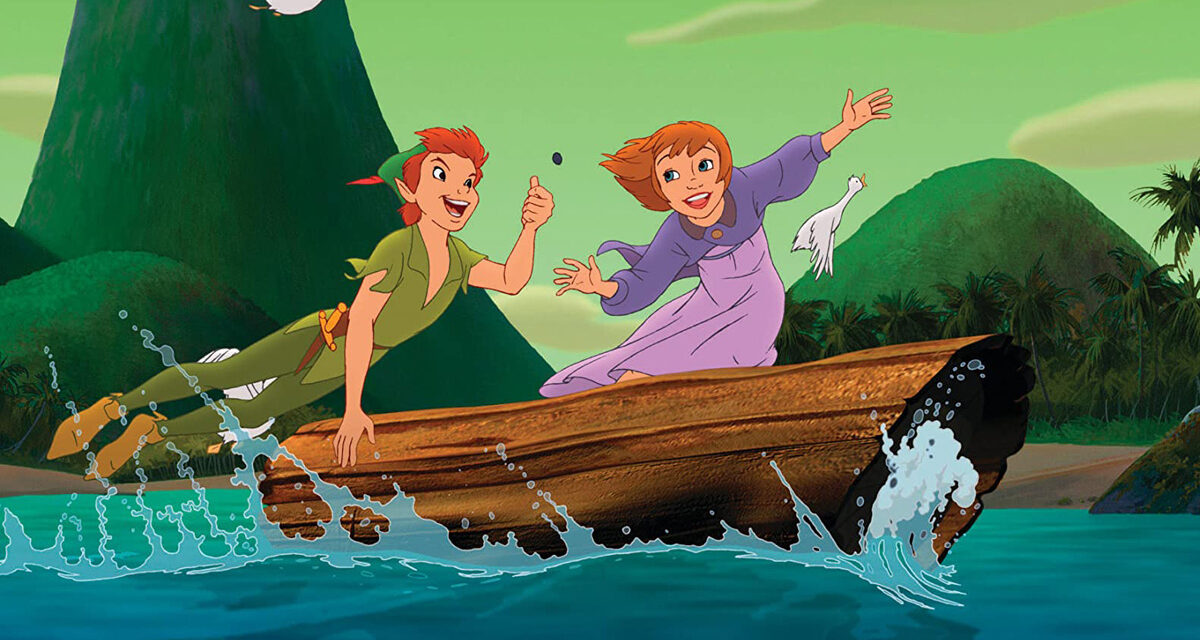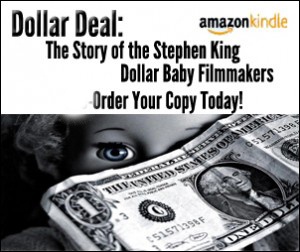Wendy has grown up and has two kids of her own whom she continues to tell the stories of Peter Pan. However, the war ravages London and her daughter Jane is forced to grow up early, leaving childhood behind. When Captain Hook kidnaps Jane, it will take a little faith, trust and pixie dust to help Jane believe again before Peter Pan and Tinker Bell fall to the power of disbelief.
The Lowdown
I am not a big fan of the original Peter Pan animated feature. I had a hard time liking any of the characters. You were presented with two heroes and one icon, all of whom proved difficult to completely get behind.
Peter Pan was the boy who never wanted to grow up. He was a protagonist who only acted like a hero when either forced to or when doing so as a prank for fun. This is a fun idea for young boys but how can you really cheer for a character that never does anything because it is the right thing to do, but instead because it is fun or daring? The second hero of the tale was Wendy, but she also proved difficult to get behind. If you are asked to believe in always remaining young at heart and not caring about growing up, how do you feel about the girl who finally understood that it was actually better to grow up and for all kids to have a mother? It is the better morality tale of the two protagonists, but you are asked to believe that Peter Pan’s story is the right one, and wouldn’t that make Wendy’s final resolution wrong?
The third character – the icon – was Tinker Bell, a jealous and vindictive type who has become a hero to little girls everywhere. She is the one with the pixie dust who makes the magic of the tale but is, in the movie, a very unlikeable type of character who never appears happy if she is not the center of attention.
You have a Disney cartoon filled with characters you are supposed to cheer for that all fail in that endeavor. Then again, that is true for some of Disney’s most beloved cartoons of the past. It is really obvious in a tale like Peter Pan, and for me that hurts it in the long run.
With Return to Neverland, you get almost the same story with a couple of new twists. Instead of Wendy, we get her daughter Jane. When Jane’s father leaves for the war, he gives Jane instructions to take care of her little brother and mother. When the war strikes London, Jane is forced to grow up too fast. While her mother still encourages the dreams of her children, Jane refuses to believe anymore.
While it was Peter Pan who took Wendy to Neverland in the original, it is Captain Hook who shows up here and kidnaps Jane, believing her to be Wendy. Peter Pan shows up and saves Jane but is left with two surprising realizations. One, it is not Wendy he saved but her daughter Jane. Second, is the more disturbing fact that Jane already acts like a grownup and has lost her inner child. To further complicate things, Jane proclaims that she does not believe in fairies and this causes Tinker Bell to begin to lose her light and, furthermore, her powers. If Peter Pan cannot help Jane believe once again, Tinker Bell will lose her light forever.
Peter Pan was, at its most basic premise, a charming tale of desire to remain a child inside and never to stop dreaming. Return to Neverland is more about teaching someone who has forgotten what it was like to be a child, remember what a joy it once was and return to that level of enjoyment inside once again. It is a logical follow up to the original classic cartoon.
What makes this movie less charming than the original is the fact that it is plagued with the problem of many of today’s animated hits. Instead of relying on original jokes and classic situations that makes comedies really inspiring, Return to Neverland attempts to plug in pop culture jokes, and uninspired sarcasm from its characters which seems out of place in a Peter Pan movie. Too much of this movie’s script is unoriginal. The crocodile that haunted Hook in the first movie is replaced by an Octopus style sea beast here, with the same jokes. Tinker Bell has the same jealous, vindictive attitude towards Jane as she did towards Wendy. There is almost nothing new to see here.
Almost
What does work about this new fairy tale is strong, but for a completely different audience. While the original Peter Pan was like a dream for little boys who never wanted to grow old, Return to Neverland is more geared towards girls. It is a story of girl power and when Jane re-discovers her inner child and believes in faith, trust and pixie dust, she is able to become the first Lost Girl and help save the day. I feel that despite the corny jokes and uninspired humor, the story is slightly stronger than the original. Jane is a character that is more powerful of a role model than anyone in the first movie.
It is too bad that the great characters and plot are offset by such an eye-rolling script. Despite all my criticisms towards this movie, I have to say that it is a success when aimed towards the kids. I feel it is not up to par for adults who have grown to love Peter Pan, despite the original film’s flaws. But it is a great story for kids with better characters for them to look up to than the original film ever gave us. There is still the playfulness of the boy who never grew up and the magic and wonder of the beautiful fairy, but here you have a little girl that can be truly admired and looked up to in Jane.
The Package
It’s presented in 1.66:1 Widescreen with Dolby Digital 5.1 Surround Sound.
There are two deleted scenes with introductions by the producers, Chris Chase and Sharon Morrill. The footage is in a very raw format, flipping between the actual animation and the storyboards and the pencil animation, depending what was completed on that part of the scene. The first is when Hook realizes Jane is not Wendy and the second is Tinker Bell footage.
There is a game, Tinker Bell’s Challenge: Quest for the Light. It is a game where you spin a wheel and have to collect cards to gain Faith, Trust and Pixie Dust.
Finally, there is Backstage Disney: Disney Fairy Moments. The moments are Rosetta & The Flower, Iridessa & The Lightbugs and Tink & The Bell. These are short animated previews with the three fairies, Rosetta, Iridessa and Tinker Bell. These exist simply to promote the upcoming Tinker Bell movie.





